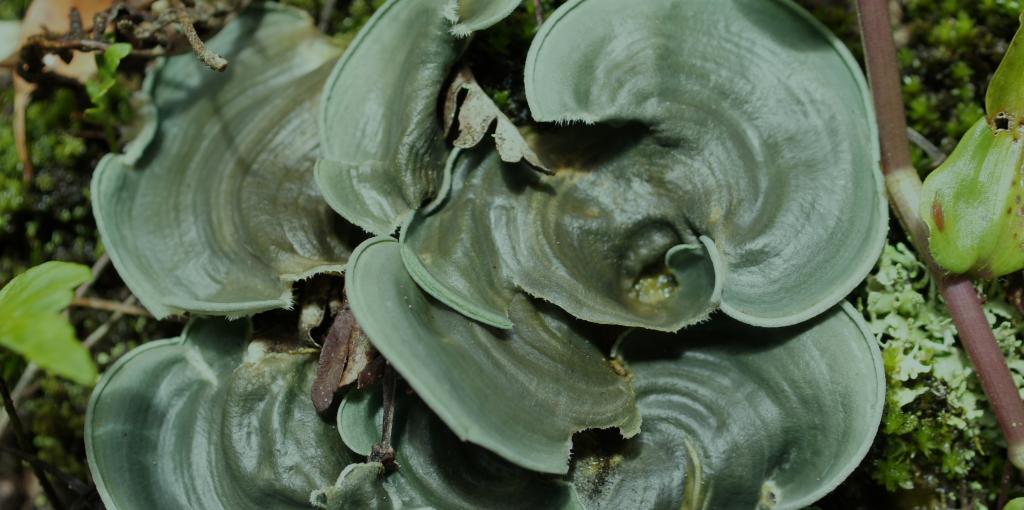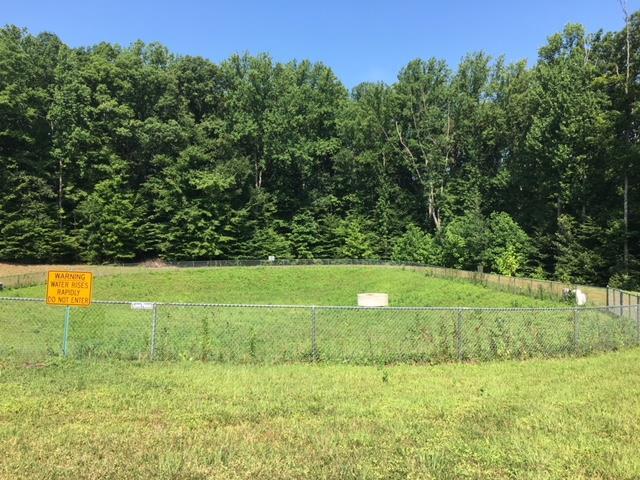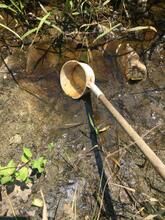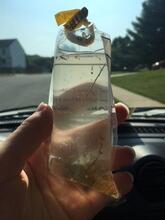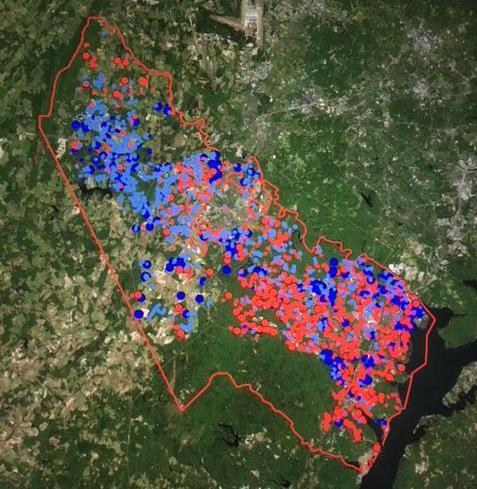Charity Walter
Admission CTAs
MOSQUITO AND FOREST PEST SURVEILLANCE TECHNICIAN
Internship with the Prince William County Department of Public Works, Environmental Services Division
Story and images by Charity Walter
About mid-way through my spring semester in 2018 I started to seriously pay attention to the internship opportunities that my academic advisor was sharing in his regular emails. The internship opportunity I applied for and got accepted to was with the Mosquito and Forest Pest Management, a branch of the Environmental Services Division in the Prince William County Government Department of Public Works. I was to work as a seasonal employee with the title of “Mosquito and Forest Pest Surveillance Technician.” The Branch usually hires four interns for the summer to help the regular staff during their busiest months. Two interns were tasked with setting, collecting and maintaining adult mosquito traps. The third intern helped with the forest pest and GIS projects that the staff conducted. The last intern (myself) was to inspect sites across the county for mosquito larvae.
My job was to take a county government vehicle around to selected areas, mainly storm water management facilities (Image 1) and use a technique called dipping (Image 2) to test for mosquito larvae. If I found any, I would record this information in a custom-built GIS based field data management system that is run on tablets, take samples (Image 3) and report back to the office. Any larval samples I collected would be later identified and a field technician certified to apply pesticides would be sent out to apply the appropriate larvicide. Over the course of 12 weeks I surveyed 385 sites across the county (Image 4). Roughly 6% of these sites were found positive with larval mosquitoes.
After a blood meal, the female adult mosquitos will search out small still shallow bodies of water to lay their eggs. Generally, sites that had mosquito larvae usually fit certain criteria. A majority of the time, storm water facilities started breeding mosquitoes because rainwater erosion had created small pools or habitats, or storm water facility riser became clogged with trash and debris. These small pools were also usually new and small enough not to have predators that feed on larvae. Woodland pools or swampy areas that are slow to drain are also common sites as well and occur naturally. The most easily avoidable breeding habitats occur in artificial containers like birdbaths, plant saucers, children’s toys, rain gutters and tires which are often the culprits for breeding mosquitos in residential areas. It was part of my responsibility to perform source reduction which means I would dump out water from artificial containers or remove debris from clogged storm water facilities to drain water where mosquitoes breed.
Although site inspections were my main responsibility I was able to receive some cross training with the other internship responsibilities and help with the forest pest projects. As a response to the threat on the county’s ash trees, the branch has been participating with experimental biological control to combat the infiltration of the invasive emerald ash borer. Parasitoid wasps that parasitize emerald ash borer eggs or larvae are released on affected trees in identified areas. To test whether the strategy is working, weekly samples were collected from the set traps and later sorted. From the cross training I also gained some experience with setting and collecting adult mosquito traps. There are three types of traps that are utilized, two that lure mosquitos looking for a blood meal and one that attracts gravid females looking for a place to lay her eggs. Two of the traps, the CDC Light trap and Reiter-Cummings gravid trap, were developed by the CDC and the third, the BioGents Sentinel, is a proprietary trap specifically developed to catch the Asian Tiger Mosquito. The purpose for these adult mosquito traps is to monitor for mosquito-borne diseases such as West Nile Virus in over 60 locations around Prince William County.
Altogether, my time spent on mosquito and forest pest management was a positive learning experience. I learned how local governments protect forest and public health by controlling mosquito and forest pest through low impact integrated pest managements practices. I appreciated the opportunity to learn and work with the branch’s talented and knowledgeable staff who were always willing to help and teach me throughout my summer internship.
Back to https://science.gmu.edu/news/spotlight-evpp-494-internship
